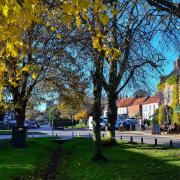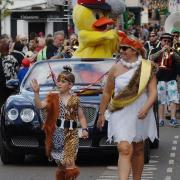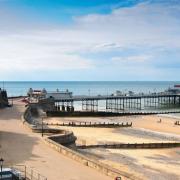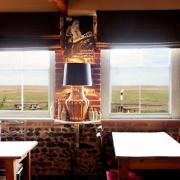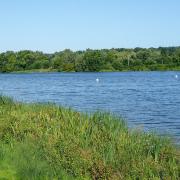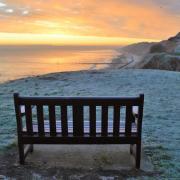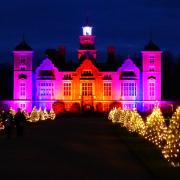The Forestry Commission, which created Thetford’s popular woods, celebrates its centenary this year

During the month of July 1916, with the noise of the Somme offensive echoing over the English Channel, Prime Minister Asquith asked Sir Francis Acland to set up a committee to 'Consider and report upon the best means of conserving and developing the woodland resources of the United Kingdom'? Surely there were more important matters for politicians to 'consider'?
By the beginning of the 20th century Britain's woodlands, which once thickly clothed the countryside, had been reduced to about 4% of the land area due to centuries of clearance by our ancestors. Of this 97% was privately owned. For years this meagre woodland resource managed to supply some 8% of Britain's annual wood requirements. A few prophets had expressed concern about the future availability of suitable wood, but their words went unheeded: there was plenty of timber in other parts of the Empire and there were plenty of ships to bring it to Britain - why worry? Successive governments refused to recognise the fact that there was a problem - until the outbreak of the First World War. Then it was too late.
In 1914 it soon became apparent that Britain's ships were at the mercy of German U-boats. Stringent attempts were made to reduce imports of wood whilst Britain's privately owned woods were scoured for timber. The situation was later summed up succinctly by Prime Minister David Lloyd George when he said that Britain came nearer to losing the war through lack of timber than want of food. This was what led to the appointment of what came to be known as the Acland Committee. It was the first serious attempt to recognise the importance of forestry to the economy.
The committee members worked fast, presenting their report to the Cabinet in May 1917. They didn't have an easy time; facts and figures on both the country's existing woodlands and potential tree-planting land were sparse and unreliable. One of the main recommendations was that the area of woodland in Britain should be trebled, from 1.2 to 3.1 million hectares, by the establishment of a state forest service with funds to acquire planting land, establish new woodlands, carry out research and provide advice and grants to existing private landowners.
The forestry seeds were sown. Now they had to be nurtured.

An honourable race?
Progress was swift. The act establishing the Forestry Commission came into force on September 1,1919 and eight 'Commissioners' were appointed, with the Scottish landowner Lord Lovat as Chairman. They held their first meeting in London on Sunday, December 7, the planting of the first 'Forestry Commission trees' high on the agenda.
Two properties had been earmarked for this purpose, Eggesford Forest in Devon and Monaughty Forest near Elgin in Scotland. After the meeting Lord Lovat and commissioner Lord Clinton decided to have a competition to see who would plant the first trees, Clinton at Eggesford or Lovat at Monaughty. With Eggesford being 200 miles west of London and Monaughty 600 miles north, the odds were heavily weighted in favour of the English lord. The two men must have recognised this and discussed how to make the competition fair. There is no record of what they planned to do, but Bradshaw's railway timetables for 1919 provide some clues. By staying overnight in Exeter and getting an early train on Monday morning, Lord Clinton could have planned to get to Eggesford at 9.39 am on December 8. Meanwhile Lord Lovat could have planned to take the North British Railway Sleeper leaving Kings Cross Station at 7.30pm on Sunday.
That would have arrived at Aberdeen early enough on Monday for him to catch the first morning train to Elgin arriving at 10.35am - only one hour later than his rival would arrive at Eggesford. Victory then would depend on how quickly the rivals could get from the stations to their tree planting sites and plant some trees.

The official record says that Lord Clinton won: he planted some European larch and beech trees at Eggesford Forest early on Monday, December 8 then sent a telegram announcing his achievement to Lovat c/o Elgin Station. It was handed to Lord Lovat as he stepped off the train.
But my research has revealed a different story - one that has not been made public for a 100 years. Lord Clinton was so determined to win that immediately after the meeting he rushed by train to Eggesford to be met by local foresters who drove him to Eggesford Forest where, during the evening of Sunday, December 7, he planted the trees - probably in the dark and before Lord Lovat's sleeper train had even left London! The occasion is marked by a monolith in Eggesford Forest, tactfully identifying the site as being where, in 1919, 'on December 8' the first trees were planted by the Forestry Commission in the United Kingdom.
There is no record of when Lovat learned about his rival's action, but when he did the word 'cad' must have crossed his mind! He couldn't have borne a grudge though because Lord Clinton succeeded him as chairman of the Forestry Commission in 1927.
A growing concern
During 1922 a government committee under Sir Eric Geddes recommended that the Forestry Commission should be abolished. It survived that threat, and other later ones, partly because, without state support, most landowners couldn't take on the heavy long term financial burden of planting and managing the considerable areas of forest land that needed to be planted, or replanted, after the war.
Norfolk's Thetford Forest is a case in point. Identified as being poor quality agricultural land but ideal for afforestation, between 1923 and 1925 the Forestry Commission purchased or leased from the owners some 26,000 acres of land (it was acres, not hectares then). By 1943 this had increased to 49,000 acres, 77% plantable, acquired from 18 landowners. Today it is the largest man-made forest in England.
National forest policy underwent changes over the years, but generations of dedicated state foresters adapted and Britain's area of woodland slowly increased. Many mistakes were made, mainly due to the fact that there had been little research done on British silviculture until 1946 when the Forestry Commission established a centre for research in Hampshire.

Today the Forestry Commission's legacy can be seen the length and breadth of Britain. Grants administered by the Commission to private woodland owners have resulted in previously neglected woodlands becoming competently managed, and state-owned, Forestry Commission-managed forests are accessible to most of the population.
Today the title Forestry Commission only remains in England, the responsibilities of the commission in Wales and Scotland having been devolved to government agencies. But the legacy of the original Forestry Commission persists in the present total area of woodland in Britain - 3.06 million hectares - almost exactly the area that the Acland Committee recommended in 1919 should be the long-term forestry objective. England now has 10% of its land in woodland; Scotland 19% and Wales 15%.
The Forestry Act of 1919 laid the foundations for change in Britain's countryside. So 100 years later let's raise a glass to the act's founding fathers, Sir Francis Acland and his fellow committee members (including Lord Clinton). They did a good job.
Better still let's plant a tree.




